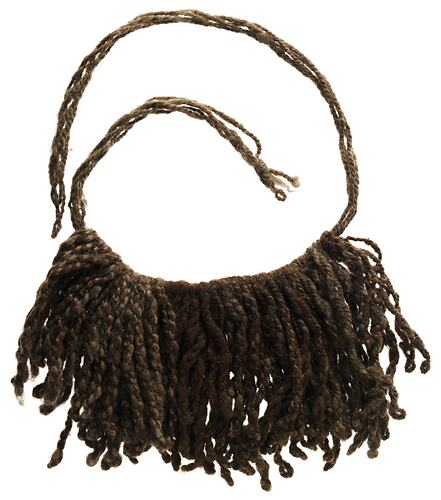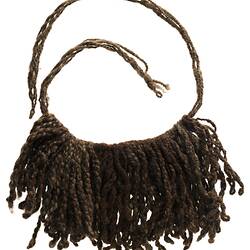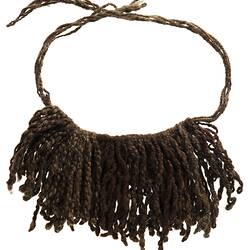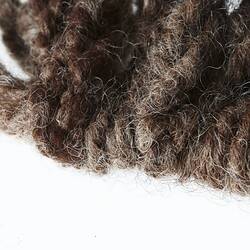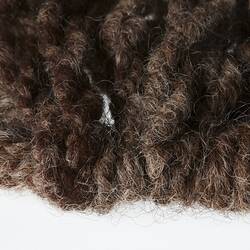Summary
As a young girl I used to wear a mawulyarri. Young women, young men, young girls and young boys could all wear one. In the early days it was made of human hair, rabbit fur or wild pussycat fur. We would cut the hair off with a sharpened stone. Nowadays it's easy with scissors. This mawulyarri is spun from sheep wool. I spun it by hand, on my thigh.' Pantjiti Cooper, Kalka, South Australia.
Pantjiti Cooper, the artist who skilfully made this mawulyarri, is from Kalka, which is located in the far north-western corner of South Australia near the tristate border of South Australia, Northern Territory and Western Australia. Kalka is situated 14km from Pipalyatjara and both communities have many accomplished artists who are represented by Ninuku Arts which is a wholly-Indigenous owned and governed Art Centre.
Local Name
Mawulyarri
Physical Description
Apron made of sheep's wool which has been handspun and is undyed. Four strands of yarn form ties. Double strands suspended from the ties form the apron.
Significance
Women of the Central and Western desert have sourced and used natural fibres for countless generations to create items for both daily and ceremonial purposes. Such items include yakutja (pouches), wipiya tjina (sandals), manguri (head rings) and mawulyarri (hair-string skirts). Today, these women have further expanded their weaving skills to include the manufacture of baskets, vessels and sculptures which often incorporate desert grasses, feathers and seeds expertly bound with string, wool or raffia.
More Information
-
Object/Medium
Ornament, waist
-
Maker
-
Cultural Groups
-
Locality
-
Date Produced
-
Date Collected
-
Object Measurements
410 mm (Length), 220 mm (Width), 50 mm (Height)
-
Classification
-
Date Made
-
Maker
-
Clan/Language Group
-
Place Made
-
Indigenous Region
-
References
[Book] 1992. Women's work: Aboriginal women's artefacts in the Museum of Victoria.
-
Type of item
-
Discipline
-
Category
-
Collecting Areas
